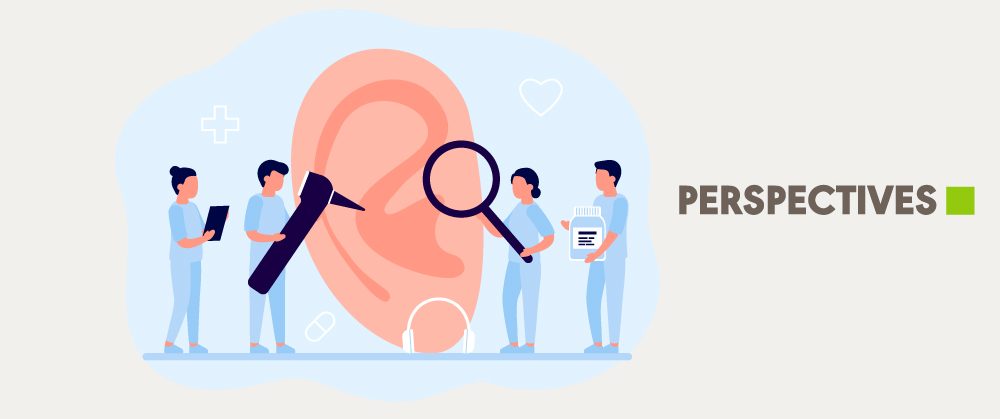ASHA’s audiologists can find information that they can use in their day-to-day work in Perspectives of the ASHA Special Interest Groups (originally known as Perspectives). Explore some research highlights from the last year below, featuring articles from all four of ASHA’s audiology SIGs!
Addressing Disparities and Sound Acceptability
Disparities in Health Care Utilization Among Deaf and Hard of Hearing Adults (SIG 8): Adults who are deaf or hard of hearing (DHH) use health care resources less often than their hearing peers, although they have a higher prevalence of many chronic conditions that require clinical management. These authors found that health care providers and systems must offer communication options to facilitate better health-related outcomes for these individuals.
Exploring the Relationships Between Sound Acceptability, Emotional Reactivity, and Personality (SIG 7): This article looked at the relationship between self-identified personality traits, emotional reactivity, and sound acceptability levels. The findings suggested that audiologists can use personality and emotional reactivity measures to help identify people who may have issues with sound acceptability.
Hearing Loss in Children
Hearing Loss in Children: Critical Medical Education Delivered as Massive Open Online Course (SIG 9): A team of researchers created a formal online training course with the goal of helping a global audience identify early signs of pediatric hearing loss. Learn about how a multidisciplinary team of experts came together to make this course a reality!
The Utility of the Dynamic Indicators of Basic Early Literacy Skills as a Literacy Screener for Children Who Are Deaf or Hard of Hearing (SIG 9): Children who are deaf or hard of hearing (DHH) have difficulty acquiring fundamental literacy skills, resulting in long-term reading challenges. The authors studied a commonly used literacy assessment to determine whether or not a literacy measure used in children with normal hearing also assessed reading in children who are DHH.
Hearing Risk Factors
Auditory and Nonauditory Risks Related to Roadway Traffic Noise: An Overview for Audiologists (SIG 8): In this article, the authors provide an overview of the negative health effects—auditory and otherwise—of being exposed to roadway traffic noise. The article also contains practical suggestions for audiologists to mitigate the consequences of excessive roadway noise exposure.
What’s New in Ototoxicity Management? (SIG 6): The authors discuss the importance of understanding the full extent of ototoxicity and expanding guidelines universally to mitigate, detect, and manage the damage from ototoxic exposures. New tools, treatments, and approaches can help audiologists and other health professionals meet these goals.
More on Perspectives
Perspectives bridges research and practice, helping ASHA’s audiologists incorporate the latest findings into their everyday work. Perspectives is free to affiliates of any of ASHA’s 20 Special Interest Groups (SIGs), including four that focus specifically on audiology. To see more from Perspectives, check out these newly updated free sample articles from all 20 ASHA of ASHA’s SIGs.
ASHA’s four audiology SIGs provide information on key areas in hearing and hearing disorders. Explore the latest Perspectives articles from each on their affiliate focus pages.
SIG 6: Hearing and Balance Sciences: Research and Clinical Applications
SIG 7: Auditory Rehabilitation
SIG 8: Public Health Audiology
SIG 9: Pediatric Hearing and Hearing Disorders
Serving ASHA’s Audiologists
ASHA’s journals have been committed to publishing audiology research since the publication of the first issue of the Journal of Speech and Hearing Disorders in 1936. More than 85 years of archives are available on ASHAWire, with more than 100 audiology-specific articles being added each year—so please continue to check ASHA’s journals for the latest in hearing and balance disorders!







